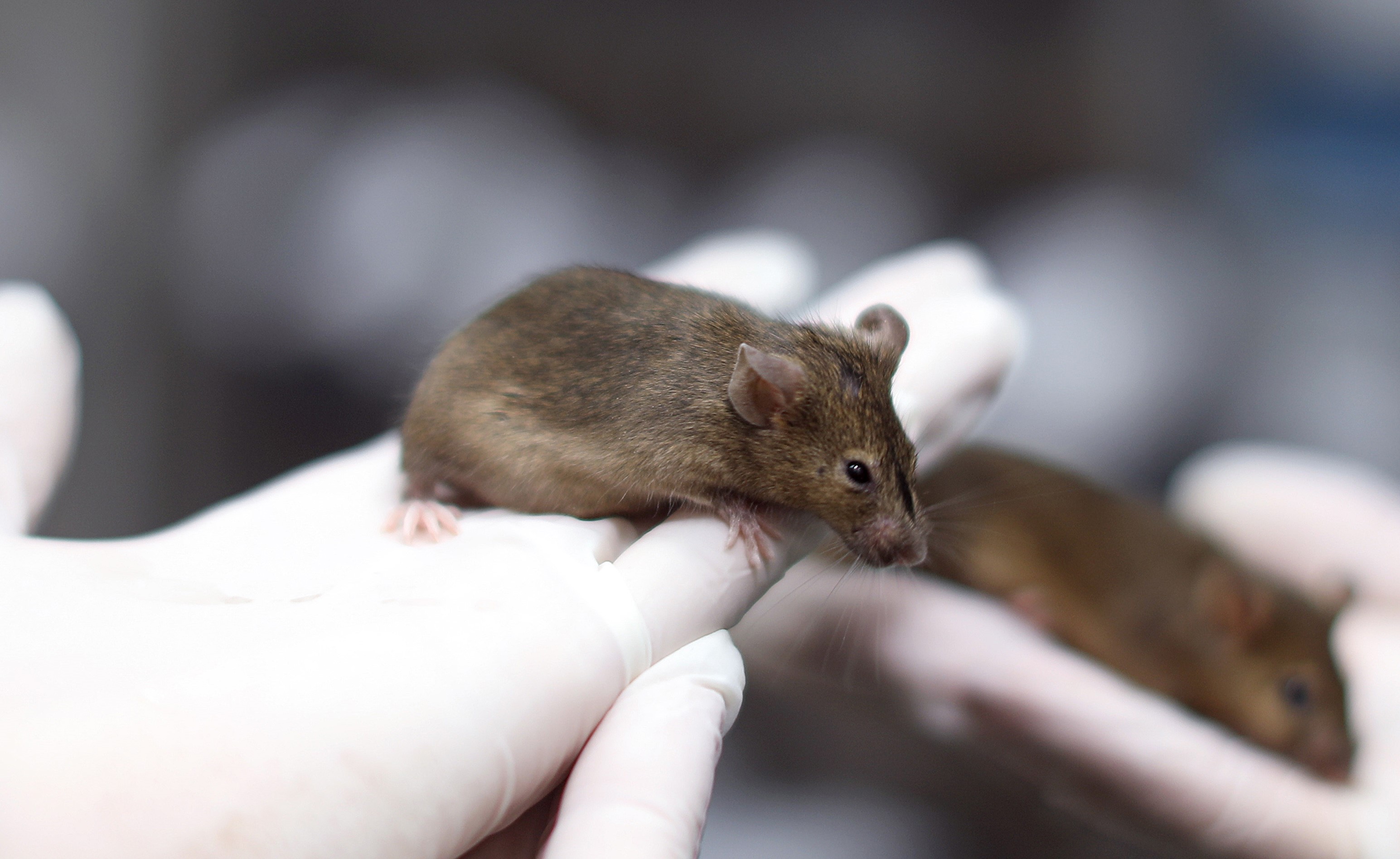BALB/cAnN
BALB/cAnN is an inbred mice strain. Haplotype: H2 d. High breading performance. Balb/c mice are widely used for general experimental studies in toxicology, pharmacology, teratology, and parasitology. Commonly applied for more specific purposes: obtaining hybridomas and monoclonal antibodies, infectious diseases studies, hippocampus-related diseases, oncology (breast cancer), and behavioral research. Due to the low level of spontaneous tumors, the strain is often used in long-term experiments, being a popular model in gene-engineering experiments. Being relatively resistant to diet-induced atherosclerosis BALB/c mice are a useful model for cardiovascular research. Balb/c mice are noted for a high level of anxiety. Sensitive to radiation. In later life might develop some types of cancers. This strain is sensitive to Listeriosis, all types of Leishmani, and some types of Trypanosomes. Female mice have low productivity: only 47% of couplings are effective.
C57Bl/6
C57Bl/6 is an inbred mice strain. Haplotype: H2 b. The coat’s color is black. This strain is often used as a model for diabetes, obesity, and atherosclerosis. Two substrains (6J and 6N) differ in diet-induced obesity development: 6J is more susceptible. Due to their physical activity, they are suitable for behavioral studies. Also, they are commonly used as a knockout model. Mice C57Bl/6 do not develop breast tumors. However, particular features of these mice consist of partial abnormal development with defects of the skull, spine, limbs, and eyes/vision. The strain has high productivity: from 84% to 87% couplings are effective.
CD-1
CD-1 strain is an outbred mouse with white coat color. Developed from Swiss mice at the Anti-Cancer Center in Switzerland. The strain is widely used as a cost-effective model for preliminary studies in toxicology, oncology, pharmacology, immunology, and virology. Well suited for aging research. CD-1 mice strain is suitable for behavioral research and as a surgical model. The strain has perfect breeding qualities (up to 93%) and active/aggressive behavior. The typical litter size is 10-13 offspring.
C3H/HeOuJ
C3H/HeOuJ is an inbred mice with an agouti coat color. The strain was created by the mating of albino females with DBA males. C3H/HeOuJ mice are mainly used in immunology, parasitology, virology, oncology, and immunogenetics. Also, they are commonly used in sensorineural and cardiovascular studies. C3H/HeOuJ mice are sensitive to Gram-negative infection. Female mice are characterized by high levels of breast tumor development. Mating productivity is very high (up to 100%), however, the litter is smaller, compared to the other strains (2-5 offspring).
NMRI (Han)
NMRI is an outbred mice strain with white coat color. Obtained from inbred strain NIH/P1. The strain is commonly used as a model for toxicology, oncology, pharmacology, teratology, immunology, virology, and neurology. Most suitable as a behavioral and surgical model. NMRI mice have an age-related increase in spontaneous tumors and kidney diseases. Very high level of productivity: 86-92%, with a litter of 10-13 offspring.
CD1-Foxn1nu
CD1-Foxn1nu are commonly used for modeling different cancer types for biomedical research purposes. Homozygous CD1-Foxn1nu are athymic mice, and not able to produce T-cells, and have a partial defect in B cell development, resulting in an inhibited cell-mediated immunity. Due to this characteristic CD1-Foxn1nu mice are widely used for xenograft tumor implantations.
SCID/beige
SCID/beige mice carry the Prkdcscid mutation which causes a lack of both T and B lymphocytes. Mice also have Lystbg-J mutation which results in cytotoxic T cell, macrophage, and NK cell function impairment. As a result, SCID/beige mice are sufficient models for the receipt of xenotransplants.






